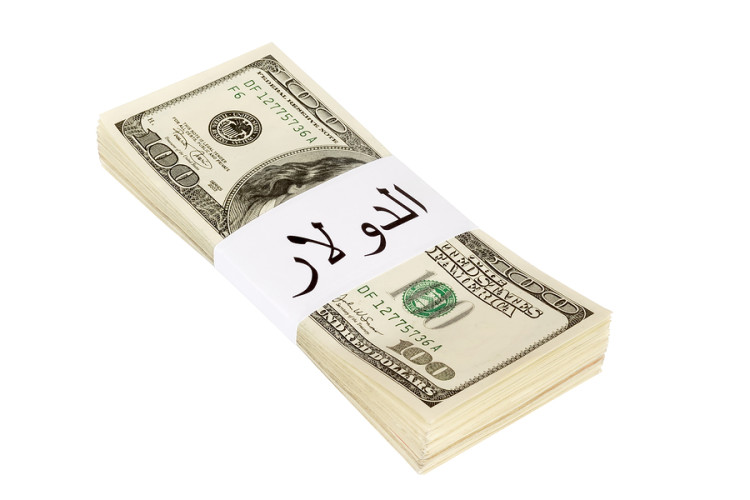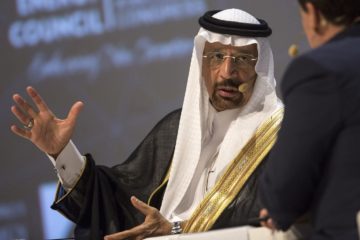Why the U.S. Treasury Hides Its Saudi Investor: Stephen Mihm

©2016 Bloomberg View
O1ZRY26S972B
(Bloomberg View) — Plunging oil prices and widening budget deficits have forced Saudi Arabia to look for new sources of revenue: The kingdom has dumped at least $100 billion of its foreign exchange reserves and is even considering selling part of the government-owned oil company Saudi Aramco.
QuickTake Oil Prices
The acknowledgement of straightened circumstances has led to speculation that the Saudis could also try to replenish government coffers by dipping into another of their biggest assets: holdings of U.S. Treasury bonds.
The idea has raised concern. Any Saudi move could have outsize and destabilizing effects on bond markets because the precise size of the kingdom’s stake is unknown, though it is believed to be among the largest in the world.
As Bloomberg reported last month, the U.S. Treasury makes public the precise holdings of more than 100 countries, but those of Saudi Arabia are essentially kept secret, lumped together with 14 other nations.
This arrangement, which conflicts with contemporary conventions of financial transparency, has a peculiar — and very controversial — origin in the oil crisis of the 1970s.
Saudi Arabia’s special status took shape during the Arab- Israeli War of 1973. When the U.S. provided military supplies to Israel, the Organization of Petroleum Exporting Nations imposed an oil embargo on countries that supported the Jewish state, sending oil prices skyrocketing and wreaking economic havoc.
In response, President Richard Nixon created the Federal Energy Office on Dec. 4, 1973, and installed William Simon, then deputy Treasury secretary, to be the nation’s first “energy czar.”
Simon, who rose to prominence trading bonds at Salomon Brothers, had acquired a reputation as a hothead. After the Shah of Iran claimed that the U.S. was still importing the same amount of oil after the embargo as it had previously, Simon described Iran’s leader as “irresponsible and reckless” and a “nut.”
Although he grudgingly retracted these comments, Simon’s suspicion of Iran remained: He believed that the shah was a dangerous megalomaniac. This belief put him at odds with Nixon and Henry Kissinger, both of whom considered the Iranian strongman indispensable to U.S. interests in the Middle East. Simon’s sympathies lay instead with another oil-exporting nation: Saudi Arabia, which had reluctantly joined the embargo.
As Simon sought to tame the oil crisis, the Watergate scandal engulfed Washington. Then, in May 1974, Secretary of the Treasury George Schultz stepped down, and Nixon promoted Simon to the post.
In the chaos of Nixon’s final days in office, Simon moved quickly and scheduled a trip to Saudi Arabia in August 1974, the month that Nixon resigned.
Simon cooked up an ingenuous plan that aimed to achieve several objectives: It would find new buyers for U.S. debt in an era of rising budget deficits, ensure that so-called petrodollars would return to the U.S. and help cultivate a partnership with Saudi Arabia at the expense of Iran.
The main component was a campaign to persuade Saudi Arabia to invest much of its surplus cash in Treasury bonds. The Saudis agreed, but with one caveat: The purchases had to remain secret, perhaps because they might call into question the kingdom’s loyalties to OPEC.
Simon accepted the conditions: The resulting deal enabled the Saudi Arabia Monetary Authority to purchase bonds via a special “add-on” facility rather than at auction — the only nation to enjoy this arrangement at the time. (It was eventually extended to others.) And the extent of those purchases would be kept secret by lumping them into a regional figure.
Initially, the accord largely went unnoticed. It was only in 1978, when Congress sought information about the extent of Saudi petrodollar holdings, that it became public knowledge. But the Carter administration, which had honored the terms, refused to supply any figures on Saudi holdings.
This prompted Representative Benjamin Rosenthal, a Democrat from New York, to wage a lonely, and at times, frustrating crusade to extract the information from the Treasury.
What Rosenthal discovered was eye-opening. In 1979, the Government Comptroller concluded that “Treasury made special commitments of financial confidentiality to Saudi Arabia and perhaps other OPEC governments in exchange for their purchase of U.S. securities,” an arrangement that one of the report’s authors later described as a “quid pro quo.”
But the Office of the Comptroller General could not compel the Treasury Department to supply precise details. Staff members interviewed Simon, who said only that “the regional reporting” – – which cloaked Saudi holdings — “was the only way in which Saudi Arabia would agree to the deal.” But the effect of this aggregation, one of the report’s authors noted, “is to suppress important Middle East country data.”
Rosenthal believed that Simon’s agreement may have violated Treasury Department rules. And along with many others in Congress and the Comptroller’s office, he believed that Treasury’s claims to confidentiality were unjustified.
But the congressman met with intense resistance as he tried to obtain the data. Treasury claimed that the secrecy was allowed under an obscure provision of the International Investment Survey Act of 1976, which the Treasury Department interpreted to mean that they were forbidden from releasing information on “individual investors.”
This rationalization conveniently ignored the fact that this law had been passed after Treasury began hiding data on Saudi bond purchases. And such scruples did not extend to the various Communist countries, all of which had their bond holdings printed in the Treasury Bulletin for all the world to see.
For the next few years, Rosenthal would continue to seek the information. The Central Intelligence Agency tried to release the data, but the Treasury Department managed to excise all the relevant pieces, rendering it useless. Rosenthal did manage to obtain some very limited figures, but the policy of secrecy remained in replace.
And so it remains. Now inquiring minds once again want to know: How much of America’s debt does Saudi Arabia own? Given the tangled history behind this question — and the potential impact on markets of a Saudi sell-off — perhaps it’s time for Treasury to come clean.
This column does not necessarily reflect the opinion of the editorial board or Bloomberg LP and its owners.
To contact the author of this story: Stephen Mihm at smihm1@bloomberg.net To contact the editor responsible for this story: Max Berley at mberley@bloomberg.net
For more columns from Bloomberg View, visit http://www.bloomberg.com/view






No Comment